On January 21, 2018, at 2:43 a.m. (French time), RocketLab launched its Electron launcher for the second time from New Zealand. This lightweight rocket, 1.2 meters in diameter and 17 meters tall, took off for a second test flight after the partial failure on May 25, 2017. On its first flight, named It’s a test the American company launched a rocket without payload, simply to test the launcher and show the world that a new player was in the game. Unfortunately, a configuration problem with a radio on the second stage compromised the ascent, and the launcher did not reach orbit. However, this flight allowed the teams to observe that the first stage of Electron performed an exemplary liftoff and trajectory. This second flight, named Still Testing carried four small satellites, which will be described later.
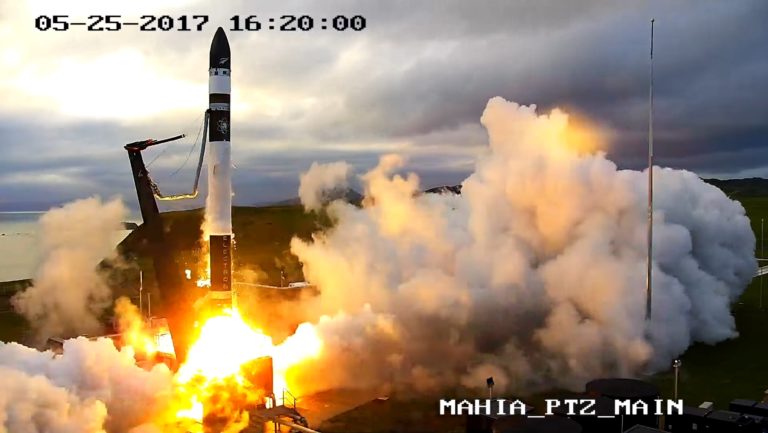
A launcher with many unique features
Electron is powered by Rutherford engines. This engine name derives from the New Zealand physicist who discovered a subatomic particle named the electron. There are a total of ten Rutherford engines on the RocketLab rocket. The first stage is powered by nine of these engines, while the second stage uses one equipped with a nozzle adapted for the vacuum of space. Since space is (almost) a vacuum, the outgoing gases from the engine need to be expanded further to approach ambient pressure and thus maximize thrust. The Rutherford engine, which underwent numerous ground tests before the launches of It’s a test and Still Testing was quickly highlighted with this significant number of engines, reducing costs by increasing volume. Another specificity of these engines lies in their manufacturing method. Unlike Vulcain engines (Ariane 5 and 6) or Merlin engines (Falcon 9 and Heavy), which are built using large industrial machines, the Rutherford engine is largely 3D printed. This metal printing method makes engine manufacturing faster and cheaper, potentially more reliable by maximizing single-piece parts, even with the most complex geometries impossible to achieve by conventional machining..
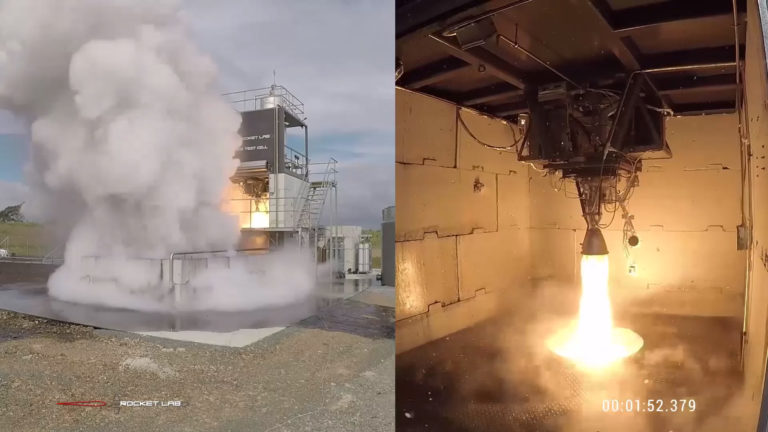
The second major difference of these engines compared to the ones we are generally accustomed to is the means of delivering propellants to the combustion chamber. Most current engines use what are called turbopumps in aerospace engineering. These are used to accelerate the propellants and pressurize them before entering the combustion chamber. A turbopump is set in motion by a gas generator that burns fuel in a primary combustion chamber. The gases accelerated by this combustion are then directed towards a turbine before being expelled through the exhaust nozzle(s). It’s this initial turbine that spins the other two turbines responsible for delivering the propellant to the engine. However, Electron doesn’t use this system; instead, it employs a system that has never been utilized on orbital rockets before: electric pumps. Simply put, the launcher carries batteries that power electric motors, and it’s the rapid rotation of these motors that brings the propellants into the main combustion chamber.
Despite its small size, the Rutherford engine is highly competitive compared to other current rocket engines. To measure the efficiency of an engine and propellant mixture, a parameter called specific impulse, or ISP, is used, measured in seconds. The Isp of an engine corresponds to the duration for which it can operate with 1 kg of propellant and with a thrust of 9.8 N (force equivalent to the gravitational force applied to a 1 kg weight on Earth). For SpaceX’s Merlin 1D engine, an Isp of 311 seconds is obtained, while the F-1 engine of the massive Saturn V reaches 265 seconds. The Rutherford engine, on the other hand, achieves nearly 303 seconds. This duration is impressive and is largely due to the electric pumps. Indeed, Rutherford does not need to ‘waste’ fuel in the gas generator and can therefore focus on thrust. In the launch video (see further in the article), one can see the second stage jettisoning its depleted batteries. This maneuver lightens the stage and thus provides better performance.
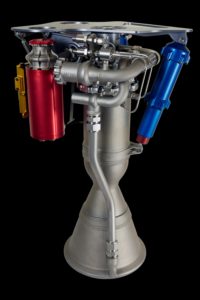
The last specificity of the Electron launcher is the nature of its tanks. Indeed, where launchers like Ariane 5 or Falcon 9 use metallic tanks, RocketLab has once again decided to innovate. The tanks of the small rocket are made of composite materials such as woven carbon. The advantage of this type of tank lies firstly in their mass: composite materials are much lighter than metals. In addition to this difference, carbon provides excellent heat insulation, allowing the company to have an entirely black rocket without the risk of fuel overheating, an issue that led to paint modifications on the early Saturn V rockets. It is indeed necessary to anticipate fuel heating and limit it as much as possible because it reduces their density, resulting in losses through vents, and the tank might not contain enough fuel for the launch to achieve its objective.
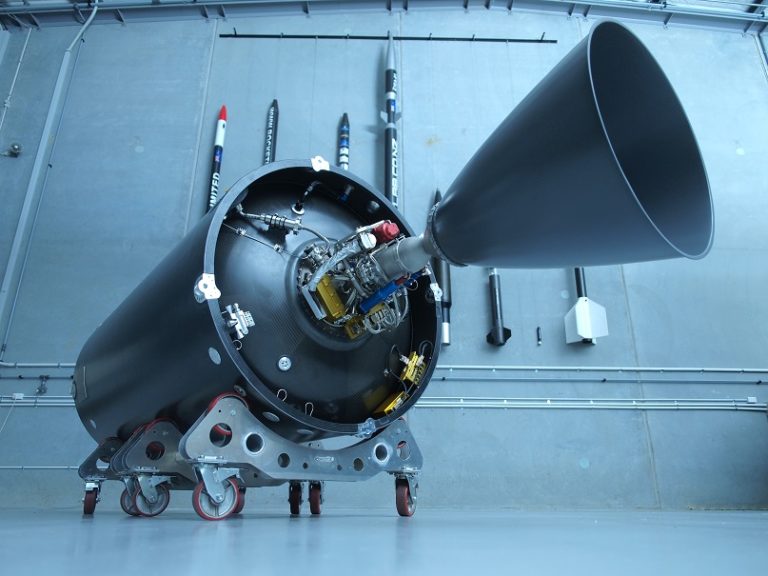
A launch postponed many times
The Still Testing flight was initially scheduled for December 8, 2017, but various issues forced the company to postpone the launch. The first reason for postponing the flight was the presence of too fast winds at altitude. A few hours before any rocket launch, weather balloons are released to study the winds at altitude. If they are too violent, the launch will have to be postponed because they will make the rocket unstable once it reaches that area. On December 8, the launch was therefore postponed for 24 hours due to high-altitude winds. The next day, there was another postponement for the same reason, and this continued until December 12.
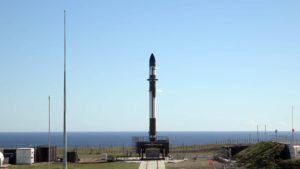
On December 12, the winds at altitude had calmed, and there was bright sunshine and beautiful weather at the RocketLab launch site on the North Island of New Zealand: a perfect day for a launch. That’s what everyone thought. However, at T-2 seconds before the launch, just as the engines had ignited, Electron’s onboard computer detected an anomaly on the launcher and aborted the launch, which would be postponed once again. To understand this new abort, it is important to briefly detail the post-launch procedures:
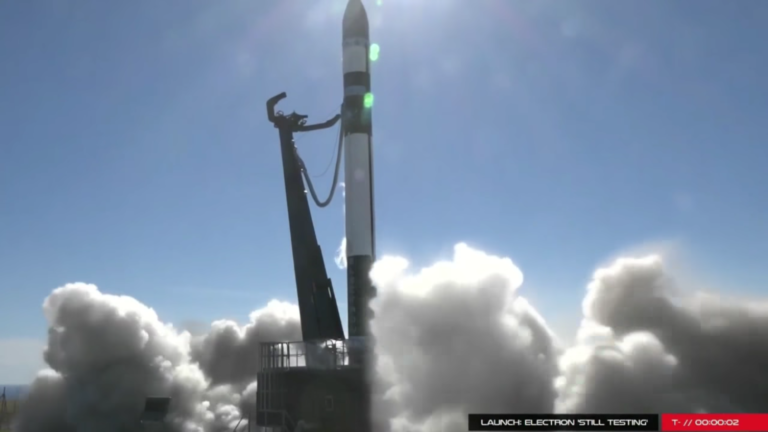
A few hours before liftoff, Electron’s tanks begin to be filled with liquid oxygen and chilled RP-1 (highly refined kerosene). Since these two propellants are cold but the inside of the tanks is warm, the propellants will start to boil and evaporate as the tanks cool down. During this phase, and to prevent the tanks from exploding due to overpressure, a small valve is opened so that the pressurized gases and air trapped in the tanks can escape. If you’ve ever seen a SpaceX launch, you’ve probably noticed large clouds of smoke on the sides of the rocket. This is actually water vapor from the tanks and from the valve outlet condensing upon contact with the cryogenic propellants, forming the large plume. What happened on December 12, 2017, was a problem related to this venting procedure. Indeed, it was very hot in New Zealand that day, and this rise in temperature began to heat up the fuel in the tanks through the valves. Shortly before the launch, the onboard computer detected abnormally high temperatures of the propellants and decided to abort the launch. If you want to see this fairly spectacular abort (the engines ignited and were extinguished a fraction of a second later), you can watch it here:
Following this new temporary setback, the launch was rescheduled for 2018. Indeed, the issue on December 12 was only discovered the next day, and on the 15th, an anomaly in the power supply to the launch pad was discovered. This anomaly was repaired on the 16th, but there was only one day left before the end of the launch window, so RocketLab made the decision to postpone the launch to the following year. The new 9-day window opened on January 20, 2018. On the same day, the rocket was in place on its launch pad, but high-altitude winds and a boat in the maritime area reserved for the launch compromised the flight, which was postponed again until the next day. Indeed… We then arrive at January 21, a day when all launch conditions were met for the launch of the Still Testing mission, which turned out to be a real success.
Four satellites and a secret stage
For this second test flight, RocketLab decided, with the agreement of the client companies, to send three commercial satellites into orbit. These three satellites belong to two different families. The first is called Dove, and the second is Lemur-2.
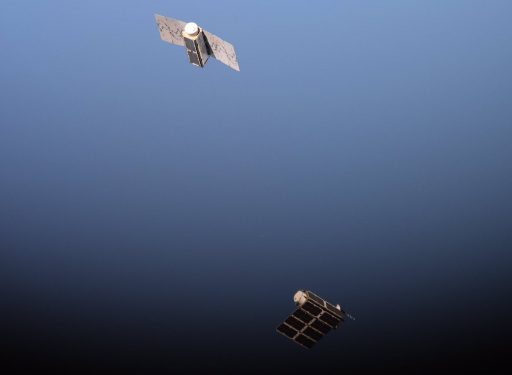
So, it was a Dove satellite that launched aboard Electron to join the constellation of the same name, a constellation operated by the Californian company Planet. The objective of this company is to quickly image the Earth for commercial purposes. Some Dove satellites have been launched in previous launches, starting from 2013, while others have had the chance to be deployed from the ISS and have thus obtained their souvenir photo like the one shown here. Dove satellites weigh about 5 kg and are presented in the form of 3U CubeSats. They are equipped with telescopic imagers capable of capturing images in black and white, color, and near-infrared with a ground resolution of 3 meters. If you remember, four of these satellites had launched aboard the Indian PSLV C40 flight under the name ‘Flock-3p’ (article discussing this launch as well as a Chinese launch). https://archive.kerbalspacechallenge.fr/2018/01/14/double-lancement-chinois-et-indien-en-un-jour/
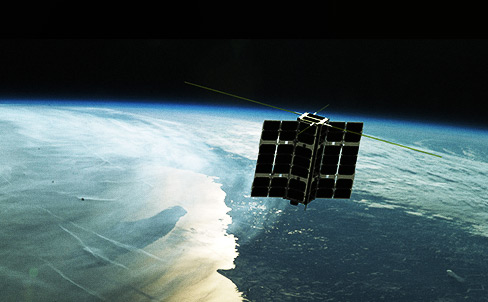
Then, two Lemur-2 satellites were placed into orbit by Electron during this flight. These newcomers will help expand their atmospheric measurement constellation to improve weather forecasts and maritime traffic monitoring operated by the company Spire. Lemur-2 was inaugurated in 2015 with four initial satellites launched by a PSLV, and it now counts 61 functional 3U CubeSats. Indeed, in addition to these 61 satellites, 12 encountered issues: two failed to deploy in orbit, and ten others were lost during the Soyuz launch failure in November 2017. Lemur-2 satellites are typically deployed by Indian PSLV and Russian Soyuz rockets, as well as by American Cygnus cargo ships after they have resupplied the ISS. Lemur-2’s two payloads are SENSE and STRATOS: the former is dedicated to maritime traffic and monitoring by acting as a relay between ships at sea and ground stations. On the other hand, STRATOS studies the atmosphere by measuring GPS signal occultations. Depending on how Lemur-2 receives the signal from a particular GPS satellite, it can calculate the temperature, pressure, and humidity of the atmosphere at various altitudes. Four of these satellites also launched aboard the PSLV C40 mission (link above).
RocketLab’s CEO, Peter Beck, announced three days after the launch that a fourth satellite was aboard this flight. This satellite, named Humanity Star, was created by the American company responsible for the launch. This geodesic sphere-shaped satellite consists of 65 highly reflective mirrors. Humanity Star rotates rapidly to create a repeated bright flash visible from the ground. This satellite is visible from any point on Earth and takes 90 minutes to complete one orbit. This sphere will remain in orbit for 9 months and may be renewed afterward. Here’s the explanation that Peter Beck gives for Humanity Star:
For millennia, humans have focused on their terrestrial lives and issues. Seldom do we as a species stop, look to the stars and realize our position in the universe as an achingly tiny speck of dust in the grandness of it all.
Humanity is finite, and we won’t be here forever. Yet in the face of this almost inconceivable insignificance, humanity is capable of great and kind things when we recognize we are one species, responsible for the care of each other, and our planet, together. The Humanity Star is to remind us of this.
No matter where you are in the world, rich or in poverty, in conflict or at peace, everyone will be able to see the bright, blinking Humanity Star orbiting Earth in the night sky. My hope is that everyone looking up at the Humanity Star will look past it to the expanse of the universe, feel a connection to our place in it and think a little differently about their lives, actions and what is important.
Wait for when the Humanity Star is overhead and take your loved ones outside to look up and reflect. You may just feel a connection to the more than seven billion other people on this planet we share this ride with.
Peter Beck
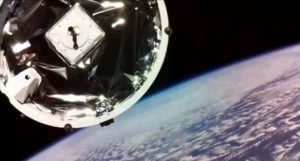
For this flight, RocketLab also tested their upper stage (Kickstage) powered by a small Curie engine. The purpose of this stage is to be able to modify the final orbit and thus release satellites into different orbits despite being launched on the same flight. This Kickstage will facilitate the deployment of satellite constellations and ensure that launched satellites become operational more quickly. This stage has its own control system, antennas, dedicated electrical system, and small nitrogen thrusters for orientation. It can carry a maximum payload of 150kg: the maximum mass that Electron can send into a sun-synchronous orbit. The Kickstage was a total success and was able to circularize the orbit of the Lemur-2 satellites after releasing the Dove CubeSat. After its mission, this small stage deorbits to avoid increasing the number of debris in orbit. This is a valuable asset for the Electron launcher, which will frequently be used for multiple deployments: the Kickstage should convince some customers!
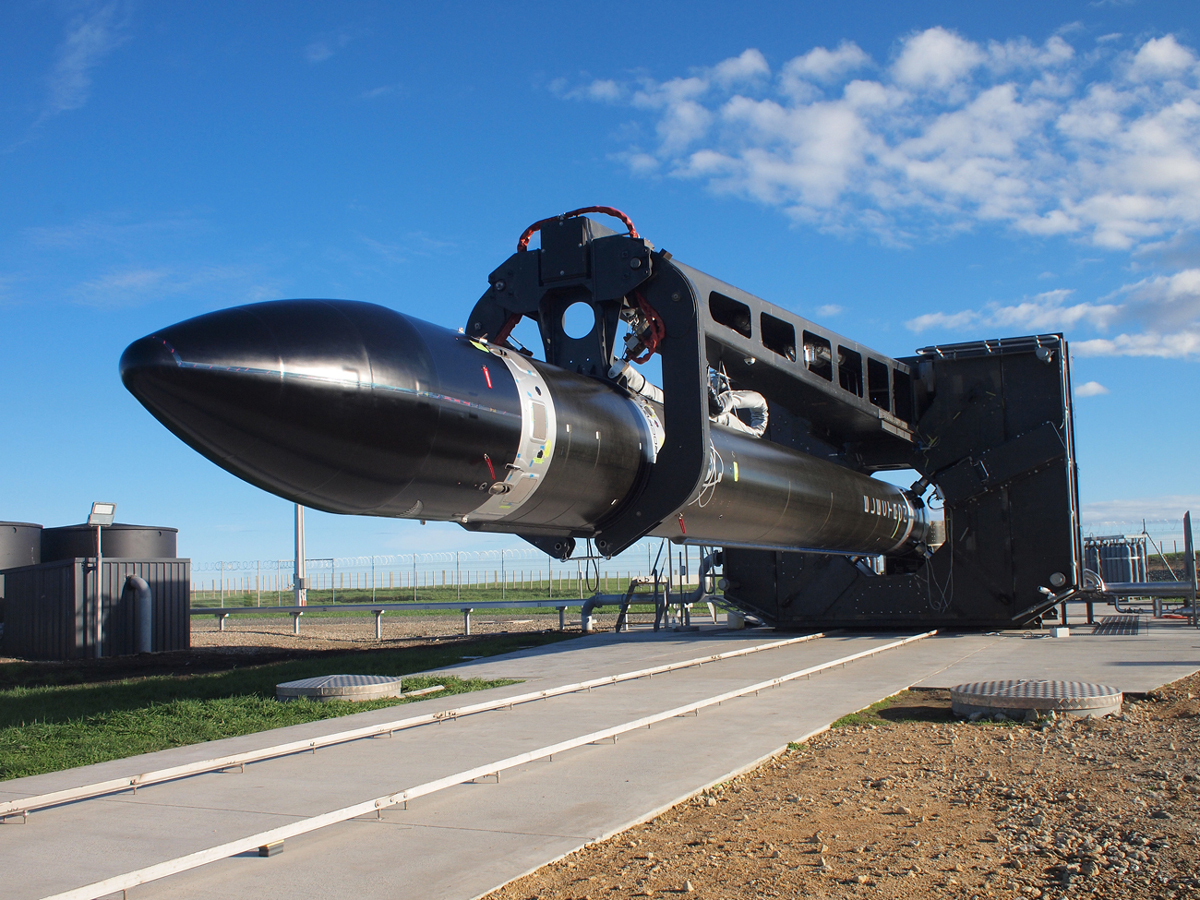
RocketLab now has a fully operational launcher open for commercial use. It has shown the world that Electron is ready to launch CubeSats for anyone. This launcher, filled with technological innovations, also allows New Zealand to enter the space industry (even though RocketLab’s headquarters are in the United States) by conducting launches from this archipelago. Let’s wish this young company good luck, and let’s hope that their upcoming launches will be equally successful.
Video of the launch (release of the second stage batteries at 21:35)
Sources : RocketLab, HumanityStar



